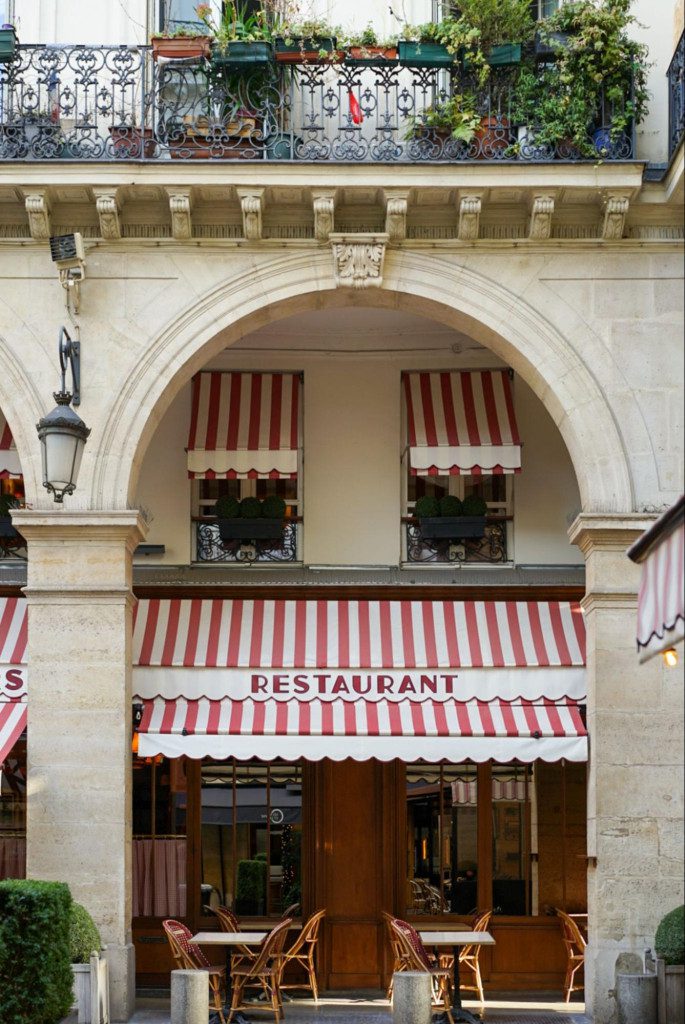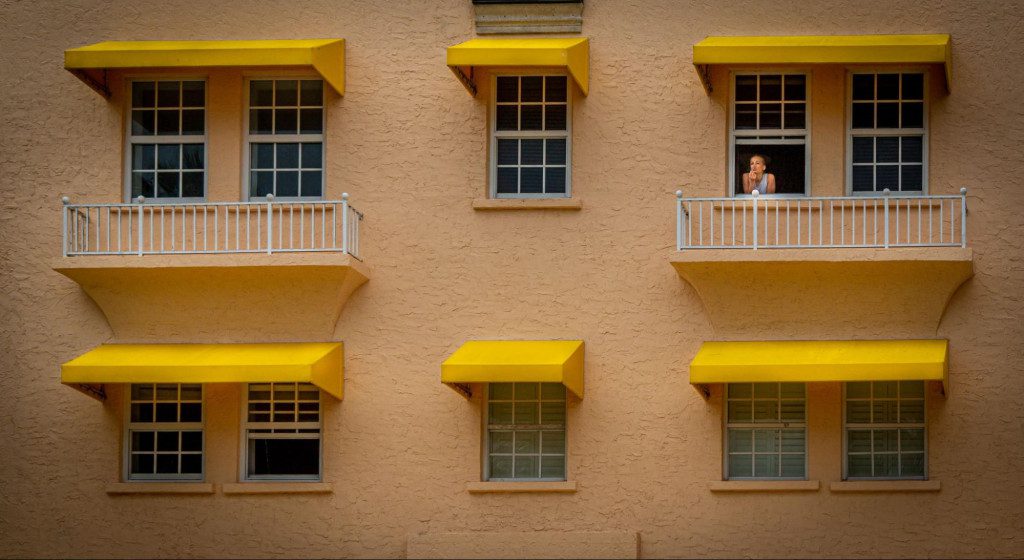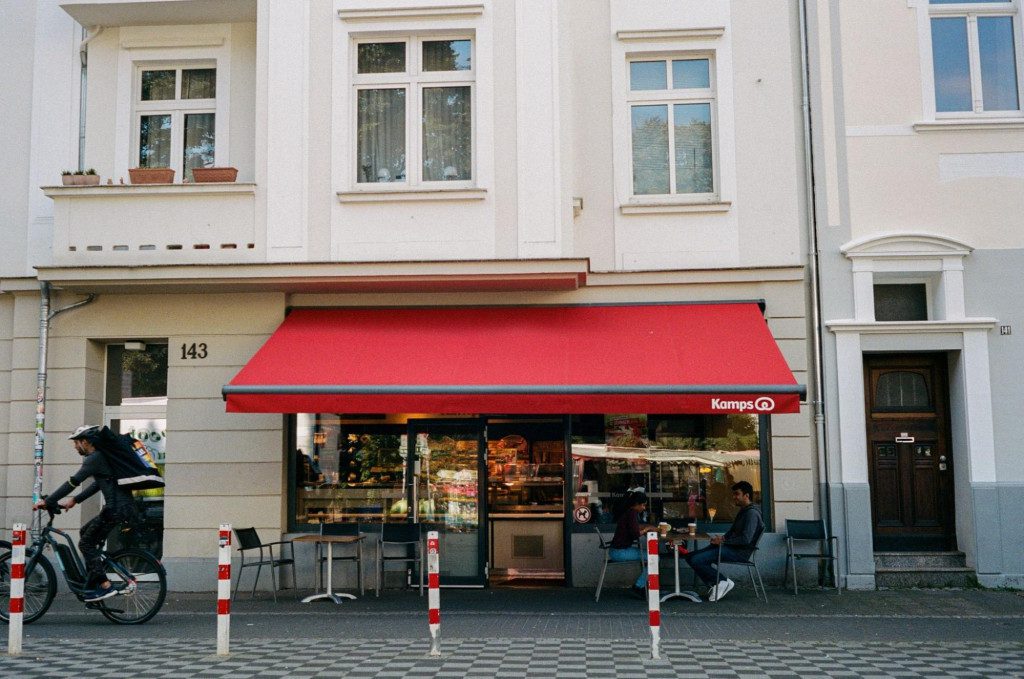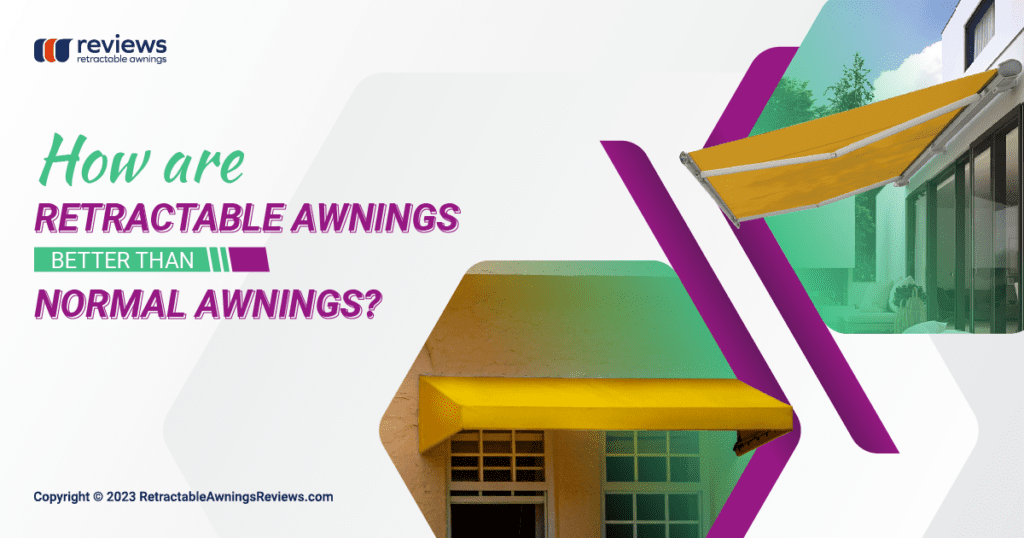Awnings are a great way to expand your outdoor living space or business area and add functionality to it at the same time. Thanks to awnings, you can get sun, UV rays, heat, rain, snow and hail protection. However, these features depend on the type of awning you get and its production materials.
People have been using outdoor awnings for a long time, both in residential and commercial spaces, in rural and urban areas. The structures extend away from the building, providing shade and significantly reducing heat levels under them.
 They are often made of colorful fabrics or other eye-catching materials, thus inviting businesses to use them for marketing purposes such as branding, for example.
They are often made of colorful fabrics or other eye-catching materials, thus inviting businesses to use them for marketing purposes such as branding, for example.
There are two main types of awnings, and there’s always a debate about which one to get. People all over the internet tend to ask the same questions regarding the differences and benefits of each type.
One type is the fixed or stationary awnings which people quite often refer to as “normal” awnings. The other type is called “retractable awnings,” and as opposed to static models, you can extend them to any point you want.
Today I’ll try to clarify how fixed and retractable awnings differ and the benefits of each type. Hopefully, this will help you to decide which one to choose.

Definition of retractable awnings and normal (fixed) awnings
To fully understand the difference between fixed/stationary awnings and retractable products, we need to know their definitions. In addition to their definitions, the two types differ in their parts, elements, production materials and function. So let’s begin.
Normal (fixed) awnings
Fixed or stationary awnings are often referred to as “normal” awnings mainly because they existed prior to retractable awnings. However, retractable awnings are becoming the new normal because of their increased functionality and customization.
Fixed awnings are outdoor coverings used for decades as a shading solution for residential and commercial buildings. People often install them over decks, patios, windows, entrances, etc., to block light or throw shade underneath and protect themselves from the scorching sun and damaging ultraviolet rays.
In their essence, stationary awnings do not move after they are installed. Their function is constant throughout all seasons, no matter day or night. Removing the entire assembly is the only way to get light to the area under a fixed awning or into a house or building.
Parts of a stationary awning and how they function
Stationary awnings are fixed to an outer part of a building and essentially act as an extension of its roof. They consist of a metal frame that you cannot retract, typically made of steel or aluminum. For large fixed awnings, support posts are located on the outer side to support the structure.
Another element of a fixed awning is a cover that’s responsible for protection from the elements. The cover is typically a taut fabric extending over the frame or a polycarbonate sheeting. Some people even use tempered glass as a cover for their fixed awnings.
Types of fixed awnings
We can categorize fixed awnings into two main types: three-season awnings and four-season awnings. As the names suggest, the types depend on the awning’s protection qualities throughout the different seasons of the year.
Three-season awnings can protect you in spring, summer and autumn from direct sunlight and light to heavy rain. However, their fabric needs to be removed in winter so you avoid awning damage caused by snow loads. Their use is also not recommended in areas with frequent hail.
Four-season awnings are sturdier and able to withstand snow loads and hail in addition to sun and rain. They provide year-round protection and are suitable for areas with frigid winters.

Retractable awnings
The official definition of retractable awnings by the Professional Awning Manufacturers Association (PAMA) is: “A moveable awning that rolls or folds against a building or other structure by which it is entirely supported.”
Retractable awnings are very different from stationary models, as the primary differences are their design and function, which have dramatically improved over the years. But let’s take a close look at the construction of a retractable awning and its parts and elements to completely understand how it functions.
Parts of a retractable awning and how they function
Every retractable awning mainly consists of five primary parts that are responsible for its function and an additional sixth part for some models.
The first part is a roller tube attached to the retractable awning frame. It’s responsible for regulating the fabric’s tension as well as rolling the fabric around itself, which we’ll talk about in a second.
The roller tube can be part of an open-cassette awning, which is exposed to the elements or partly or fully enclosed. The corresponding awning types are called semi-cassette (partly enclosed) and full-cassette (fully enclosed).
Retractable awning arms are another essential component of a retractable awning. They are attached to the “shoulder,” and their “elbows” flex to allow the awning’s arm retraction. There are two main types of awning arms: articulated spring-loaded arms and telescopic arms. Almost all retractable arms are spring-loaded.
The front bar is the part that extends away from the building and reaches the furthermost point of the awning. Its position is always parallel to the roller tube, and it is connected via the retractable awning arms. The front bar, along with the springs in the arms, keeps the fabric taut while it’s partially or fully extended.
The cover or canopy is a piece of fabric or other material that is attached to the front bar and the roller tube and extends over and above the awning arms. It is the main element that creates shade, UV, and light rain protection and reduces temperature underneath the retractable awning. Depending on the materials’ qualities and treatment, the canopy can protect from sun, heat, glare, UV rays and light rain.
The fifth main component is a detachable hand crank, which, in essence, is a metal stick that you use to reach the awning and retract or extend the arms by turning it to one side or the other. Hand cranks are primarily used in manually operated awnings but are also used for manual override motorized (electric) retractable awnings in case of a power outage.
Motorized awnings have a sixth additional component, which is the electric tubular motor.
Types of retractable awnings
Retractable awnings can come in manual or motorized versions. Operating manual models happens through a detachable hand crank like the one mentioned above. The manual operation is generally suitable for smaller-sized awnings with less weight.
On the other hand, motorized awnings are better suited for covering larger areas. Often, the construction will be too heavy to retract or extend manually or happen too slowly. That’s why you can control them via a wall switch, remote control or even an app on your mobile phone or tablet. They do need 110v or 220v electricity to function.

What benefits do normal awnings have?
People have used fixed awnings for decades and wouldn’t have done so if the product was not useful. Stationary awnings have plenty of benefits, but they are outdated and replaced by newer, retractable versions.
Weather protection
The first and foremost benefit of standard awnings is their protection from weather elements. Depending on the materials used, they can protect people, pets and furniture from the sun, heat, rain, hail, and snow. These protection qualities significantly increase outdoor space usage throughout the year, especially in commercial situations like restaurants and hotels where the business owner would otherwise lose food and drink revenue if customers are not protected from the weather.
Affordability
Another benefit that we should not underestimate is the affordability of fixed awning models. They are suitable for most homeowners and businesses as they do not require a significant investment. Most often, you won’t have to save additional money to purchase a fixed awning or look too long until you find one that fits your budget.
Branding
Stationary awnings are suitable for commercial buildings and businesses that want to showcase their branding. Business owners can request a print of their logo and phone number and choose colors matching their brand or overall design.

What benefits do retractable awnings have?
Retractable awnings are the newer and more functional version of fixed awnings. They are increasingly popular worldwide, and today vendors and manufacturers offer many models at different quality and price levels online.
Functionality
The main benefit of retractable awnings is their functionality. With a retractable roof, you can choose when to get shade and enclose your outdoor space and when to open it up to let more air in or enjoy a full view of the sky during the day and stars at night. Their retracting mechanism is effortless to operate with a motor and doesn’t require force or lots of time.
Diversity
Another considerable advantage of retractable awnings is their diversity. You can get a lightweight solution-dyed acrylic retractable awning for sun protection if you live in an area with long and hot summers.
Treated quality fabrics such as Para Tempotest can also protect you from light rain conditions, so you can also enjoy your outdoor living spaces in late spring and early autumn without having to hide indoors.
On the other hand, models with support poles (retractable semi-attached pergolas) or completely freestanding models (retractable freestanding pergolas) can handle heavier and waterproof fabrics and even aluminum louvered roofs. Louver roofs are suitable for people or businesses who want year-round use and protection from heavy rain, hail and snow.
Customization and curb appeal
Retractable awnings are also highly customizable and add curb appeal to any property. You can install them over windows, entrances, decks, patios, backyards, hot tubs, porches, etc. In addition, you can choose from thousands of different colors, stripes, solids, tweeds and patterns for the fabric cover and valance, including the color of the sewing thread.
Many business owners choose to print the phone number and logos of their companies on their retractable awnings so it’s visible from far away. By selecting a stylish canopy, they can attract new loyal customers by catching the eyes of passersby, who will see shelter and comfort and easily remember the brand and logo.
Energy conservation
A massive advantage of retractable awnings that we shouldn’t miss mentioning is the reduction of energy consumption both in the summer and winter. Because of their functional mechanism, with retractable awnings, you can reduce outdoor and indoor heat during hot summer seasons and increase it during winter.
While “increasing” does not precisely refer to increasing temperature, it means you can retract the awnings back into their cassettes or under their hoods/covers, so you let in the sunshine coming through your windows or glass doors, thus reducing your heating bill.
Longer awning life
Yet another benefit of using retractable awnings is their long life and endurance. This is, of course, if the manufacturer uses high-quality materials for production.
A full cassette retractable awning, as opposed to a non-full cassette retractable awning, is generally the best choice. The reason is that instead of constantly exposing the awning to outdoor elements, you can retract it and fully enclose it into its cassette. This way, you can protect it from high winds, heavy rain, hail or snow and enjoy it for a long time.

Which one should you choose?
Since you now know the definitions, parts, functions and benefits of stationary and retractable awnings, it’s time for the big question: “Which one should you choose?”. Unfortunately, there is no correct answer or formula and impossible for someone else to decide that for you.
Winds, heavy rain, hail, and snow
Every case is strongly individual, and you need to consider what you need, the house or building where you want to install the awning and, most importantly, the weather in your local area and in what type of weather the awning will be used.
For example, although there are retractable awnings with excellent wind resistance, it would be better to purchase a retractable pergola if you live in an area with heavy and powerful winds. The same goes for other weather conditions, such as heavy rain and hail. For heavy rain, high wind and snow protection, a louvered roof pergola is the only choice.
Sun, UV-ray, and glare protection
On the other hand, if you live somewhere with long summers and hot weather and you only need sun protection and some additional shade in your backyard, a retractable awning would be the way to go. You can choose one with breathable solution-dyed acrylic fabrics and high UV protection qualities to simultaneously increase your outdoor living space and reduce temperature.
Budget
Budget is something that nobody should underestimate when making a new purchase. However, if you can afford it, I highly recommend that you invest more and get a high-quality European product rather than saving a few hundred dollars by buying a ready-made product from China and replacing it after one or maybe two years.
In general, stationary (normal) awnings are less expensive, but retractable awnings are more functional and will last longer as they are not continuously exposed to the elements.
Maintenance
How much time you are willing to spend maintaining your purchase is another thing to consider. Maintenance mainly concerns the fabric covers, as you typically need to clean them once a year. Other materials, such as aluminum or non-rusting stainless steel, shouldn’t need any cleaning except a hose down for dust.
Regular maintenance doesn’t only involve cleaning but also caring for the awning. Retracting the roof back to its cassette or under its hood/cover during hazardous weather conditions can significantly extend the awning’s life. You can also equip motorized versions with additional weather sensors which automatically retract the awning when the wind gets too strong or it starts raining.

Conclusion
People sometimes debate whether they should get a stationary or a retractable awning. As seen above, both versions of this shading solution have their advantages. However, retractable awnings are more versatile and come in various forms (such as retractable fabric pergolas and louvered roof pergolas), ready to meet all your weather requirements.
Choosing the right awning is not always easy, but that’s why Retractable Awnings Reviews is here to help you decide. With up-to-date, accurate information and real-life customer reviews, your decision has never been made easier.
